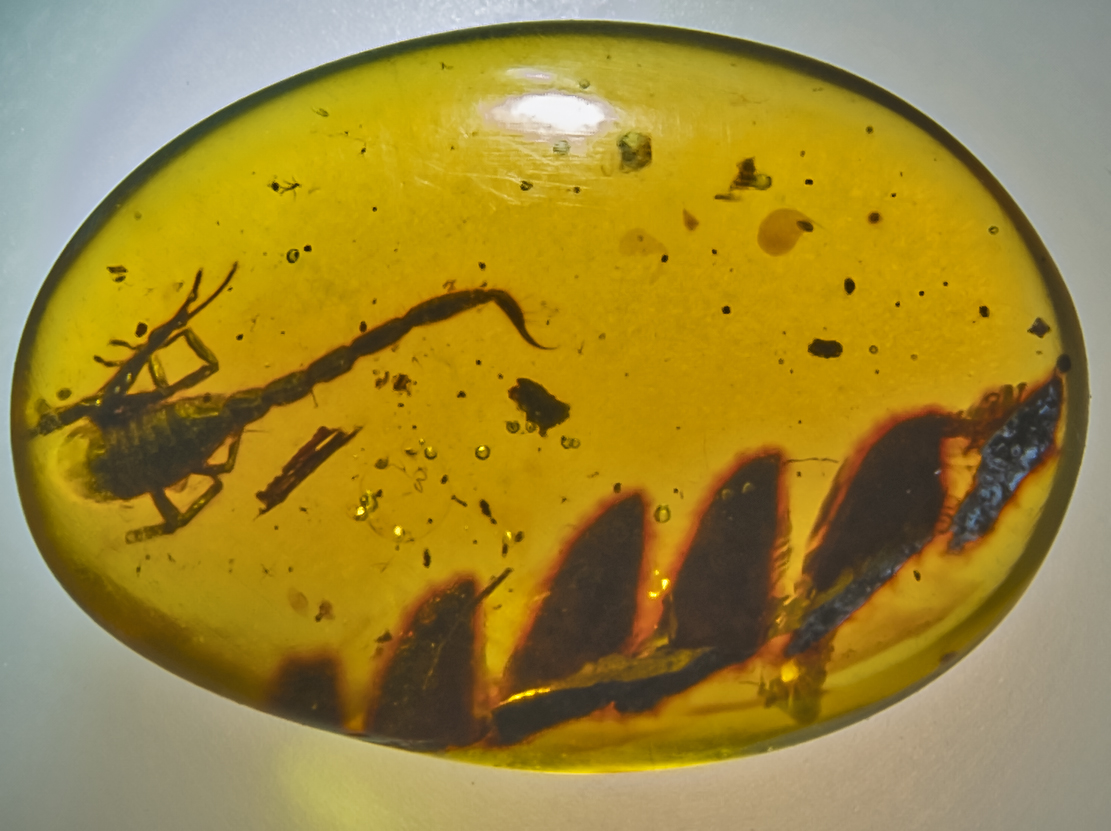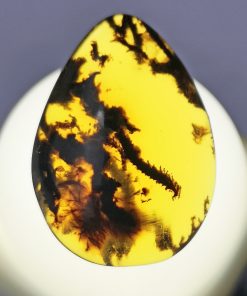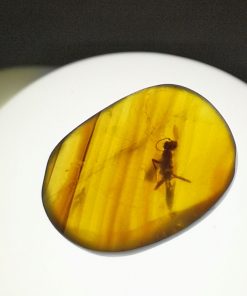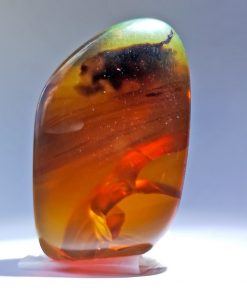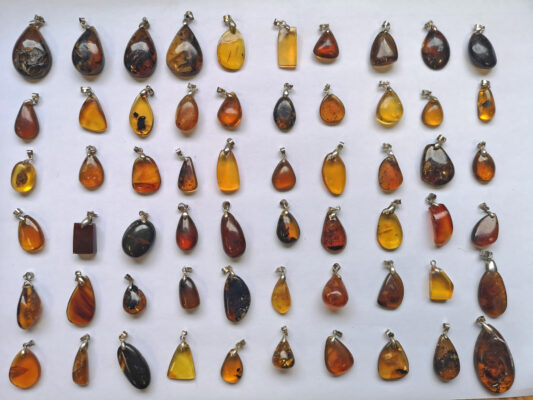sc-007-23
$1,200.00
Description
Prominent stinger on perfectly preserved Cretaceous Scorpion inside Myanmar amber from Kachin State, Hukawng Valley. This 100 million year old inclusion contains plant as well as the ancient animal from the order of SCORPIONES.
Look closely at the tail of the scorpion, under great magnification there is important details. The presence and distribution of trichobothria, specialized mechanoreceptive hairs, on the scorpion’s tail are of paramount importance. Trichobothria can vary in number, arrangement, and size, and their specific pattern can provide valuable taxonomic information. Trichobothria serve as sensory organs for perceiving air movements and possibly prey detection. Variations in the morphology and arrangement of sensory structures may indicate adaptations related to specific ecological niches or behaviors. The hairs on the scorpion’s tail may consist of various types of setae, including tactile setae, chemosensory setae. The specific arrangement and morphological features of these hairs can be used as diagnostic characters in taxonomic classifications. They can help identify the scorpion at various taxonomic levels, from family to genus or even species, and potentially provide insights into an evolutionary relationships. The study of hairs and features on the tail can also provide information about the paleoenvironment and microhabitats in the Hukawng Valley during the Cretaceous period.
Dimensions: 20.25×14.42×6.23
Carats: 5.4
*FREE SHIPPING INTERNATIONAL. ALL PIECES OF AMBER AVAILABLE FROM THE KACHIN AMBER RESEARCH INSTITUTE IS 100 PER CENT GUARANTEED NATURAL AMBER FROM THE HUKAWNG VALLEY KACHIN STATE MYANMAR. THIS SPECIMEN WAS COLLECTED AND AVAILABLE TO INTERNATIONAL PEOPLE FOR A LIMITED TIME FOR THE BETTERMENT OF UNDERSTANDING ANCIENT ORGANISMS FROZEN IN TIME IN THE MYANMAR AMBER *
Support Kachin, Support Kachin Amber!
